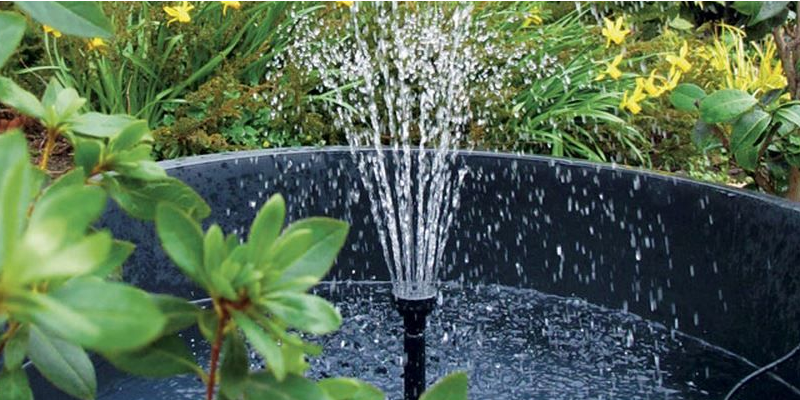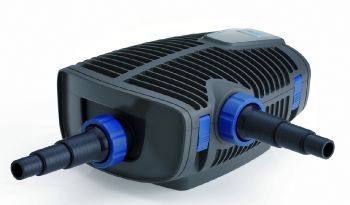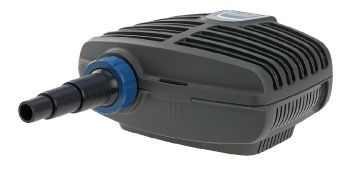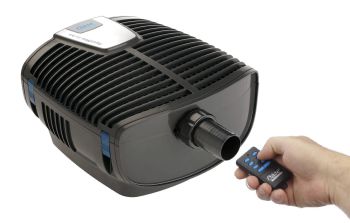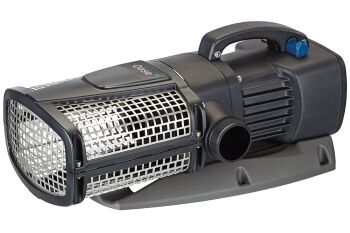With electricity prices skyrocketing, most of us are much more conscious of what we have connected to the grid and what these devices are costing to operate. If you own a pond or water feature, you may well be wondering about the electrical consumption of the pump. Here at Water Garden HQ, we are often asked; How Much Will My Pond Pump Cost to Run?
Shopping for a new pond pump?
If you are shopping for a brand new pond pump, it’s important to make careful note of the power consumption of the model you are looking to purchase. The initial cost of the pump can pale into insignificance if the motor is inefficient from an energy consumption perspective. A cheap pond pump may seem like the ideal option but, these are often expensive to run compared to a well-engineered, modern eco pump. Manufacturers are under increasing pressure from consumers to develop products which consume the minimum amount of energy but only a few select companies are actually investing into this demand. OASE are one such company and they invest heavily in eco pond pump solutions and are at the cutting-edge of pond technology. Companies such as Velda, Blagdon, Heissner and Messner are also striving to improve their product ranges to be as energy efficient as possible.
When comparing pumps, there are 3 things to check.
1. Flow rate (usually expressed in ‘Litres/Minute’ or ‘Litres/Hour’). Often marked ‘Q Max’. For Example; ‘Qmax: 8500 l/h’.
2. Pressure (usually in metres of lift). Often marked ‘H Max’. For example; ‘Hmax 3.2m’
3. Wattage (the measure of power consumption during running). For example; ‘80w’.
During your shopping research, you may find two similar pumps with very similar performance (pressure and flow rate) but one is more expensive than the other. Check the wattage and you may find that the more expensive option has a significantly lower wattage. Whilst it’s tempting to go for the cheap pump option, a more energy efficient pump may well pay for itself in a surprisingly short time. This is particularly true if the pump is supplying water to a pond filter as filtration is generally operating continuously throughout the year.
What about the running costs of my existing pump?
If you already own a pond pump and are trying to calculate how much it’s costing you to run, here are the pieces of information you need to gather together in order to calculate its running costs:
1. The pump wattage (usually printed on the ID label of the pump).
2. How long do you run the pump per day?
3. Your kWh (kilowatt per hour) charge. You will find this on your bill from your electricity provider.
For the purposes of the example calculation, let’s assume the following:
1. The pump wattage is 80 watts. This is expressed as 0.08Kw.
2. You run this for 24 hours per day, every day, throughout the year as this is a filter pump.
3. Your electricity provider charges you 30p (£0.30) per kilowatt hour.
Here’s the example calculation:
0.08kw x 24 (hours running) = 1.92Kw/day of power consumed.
1.92 x £0.30p = £0.58p per day running costs.
£0.58p x 365 (days per year) = £211.70p per year running costs.

What will help in lowering the costs of my pond pump?
There are a few things which you can do to reduce your pump running costs.
1. Fit a timer to the pump. It may be possible to reduce the running hours of your pump but in the case of a filter pump, you need to be careful to ensure that your good bacteria inside the filter is not starved of oxygen. So, during cooler conditions, you could consider switching the filter pump off for 6 hours per day, or considerably longer in deep winter.
2. Are you restricting the flow rate from the pump with a valve? If you are, it’s likely the pump is too powerful for the pond and you should perhaps spend a little time investigating the costs of a smaller eco pump. You may find that a new smaller, more energy efficient model will pay for itself in a short period.
3. Can your existing pump be fitted with a digital/electronic controller? Certain pumps can be fitted with an electronic flow controller which, if you reduce the water flow rate, also electronically reduces the power consumption. The cost of the controller will likely pay for itself in a short period of time, particularly during the winter months when the pond filter can accept a greatly reduced flow rate but still keep the water circulating in the pond and through the filter media.
What is the most power efficient pond pump?
OASE Germany was one of the first pump manufacturers to develop and adopt ‘Eco’ motor technology and has led the market with their energy-efficient pond pumps for decades. Other manufacturers have been playing catch-up due to the increasing demand from consumers which is a hugely welcome environmental boon. OASE’s excellent range of AquaMax Eco pond pumps offer huge power savings and many models can also be digitally regulated for flow rate, saving further running costs as the water flow rate is reduced. Many of their fountain and water feature pump ranges are now also adopting the eco motor technology and OASE continues to push the boundaries of energy-efficiency with their ongoing research and development programs. Great news for the pond owner and the environment!
Should I keep my pond running year round?
It may be tempting to switch off the pond pump during winter to save on energy consumption and many people do this. However, a pond and its aquatic inhabitants still need oxygen and water movement. We recommend keeping the pump running year-round and still passing water through the filter but elevate the pump around 30cm off the base of the pond on a crate or similar. This will help to keep the base water slightly warmer for the fish but still circulate and extract debris into the filter. If your pond filter has a UV clarifier, this can be switched off if the temperature of the water is less than around 8 degrees Celsius, as single-celled algae will not be reproducing in low temperatures.
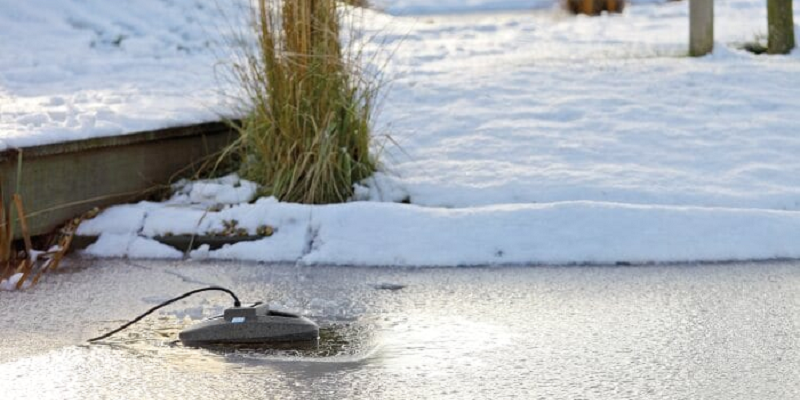
Can solar power run a water pump?
Solar powered pond pumps seem like the perfect solution to reduce your energy consumption as once they have been purchased, there are no extra costs to run as it’s powered by the sun’s energy. Here are the Pros & Cons of solar pumps.
Pros

- No additional electrical running costs.
- The solar panel is often connected remotely from the pump via a low voltage cable so the pump can be mounted in a shady location with the panel in a sunny spot.
- Solar pumps can be used where there is no possibility of connecting to mains electricity.
- Some solar pump kits also have battery storage so can be run at any time, night or day!
Cons
- Solar powered pumps and kits are generally only suited to small ponds or water features with a low water flow requirement.
- Larger pumps are available but require much larger solar panels, making these prohibitively expensive initially Vs mains powered pond pumps.
- If there is no battery storage, the pump will only function when the sun is shining directly on the solar panel. This may mean that during typical UK weather conditions, the pump is off much more often than it’s on!
- Solar pumps are not suitable for pond filter systems as these generally should be left to run day and night, which is simply impractical with a pump and solar panel without significant investment in solar panels and storage batteries.
What size solar pump do I need for my pond?
If you own a small pond, a solar pump might well be ideal for simple circulation of the water or perhaps for a small decorative fountain. The size of the pump will depend on its intended use; for example:
- A solar fountain pump will provide decorative vertical jets of water so you must make sure that the water lands safely without splashing outside of the pond. Solar fountain pump sizes generally range from a tiny 100L/Hour up to 1,500L/Hour so check the product box or the website specification for details of the water display height before purchasing, to ensure it suits your pond size.
- A solar circulation pump will simply prevent the pond water from stagnating. A rough guide would be to circulate the whole pond volume through the pump once every 2-4 hours. So, if your pond is around 2000 litres, aim for a solar pump which will produce a flow rate of around 500-1000 litres/hour. If you have fish in your pond, it would be advisable to use a mains-powered pump and filter with UV clarifier to help keep the water quality in check, 24 hours a day.
If you need help selecting the most energy-efficient pump for your pond or water feature, call Water Garden Ltd on 02392 373735 or email us on [email protected] for expert advice.





